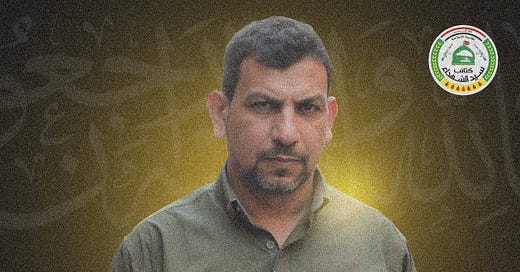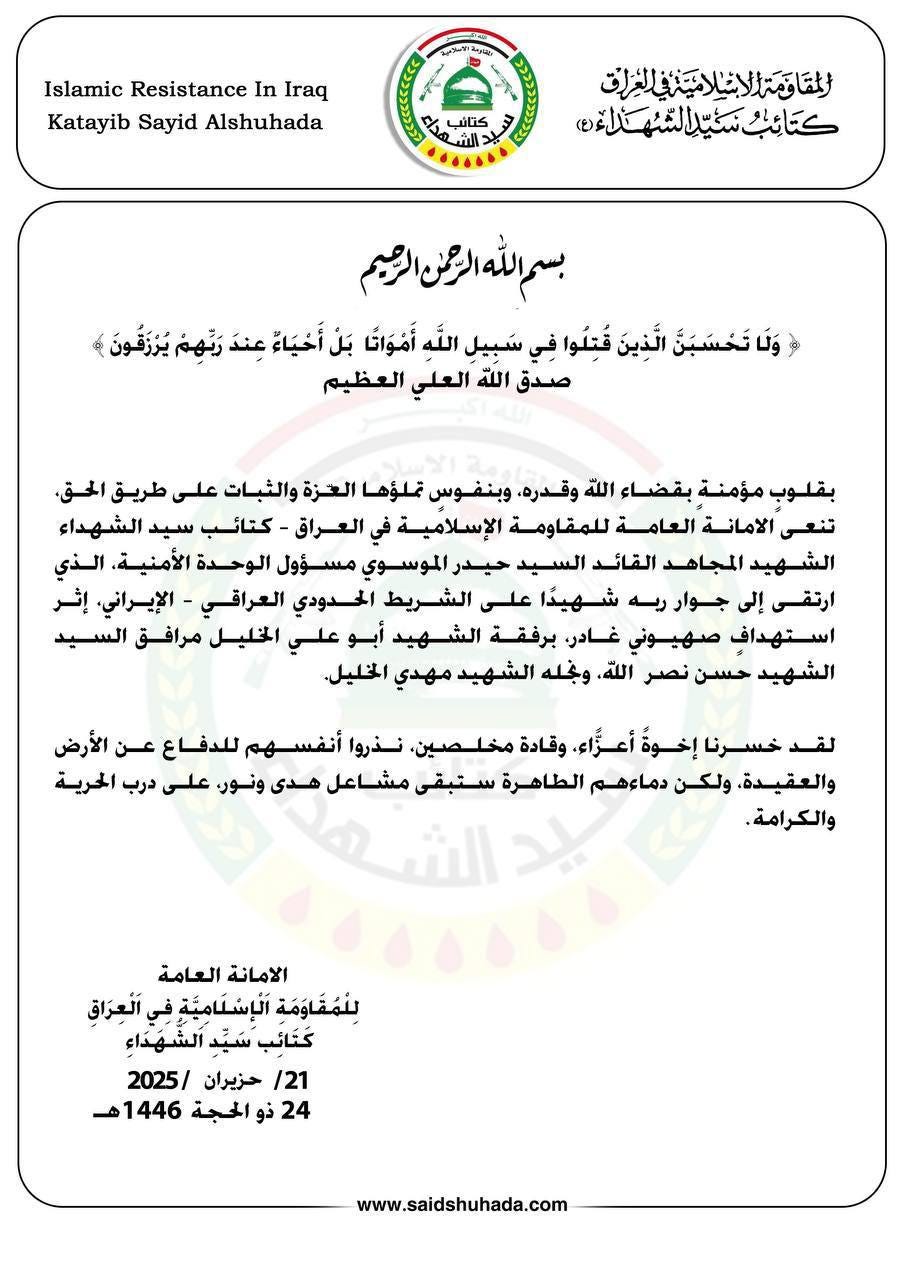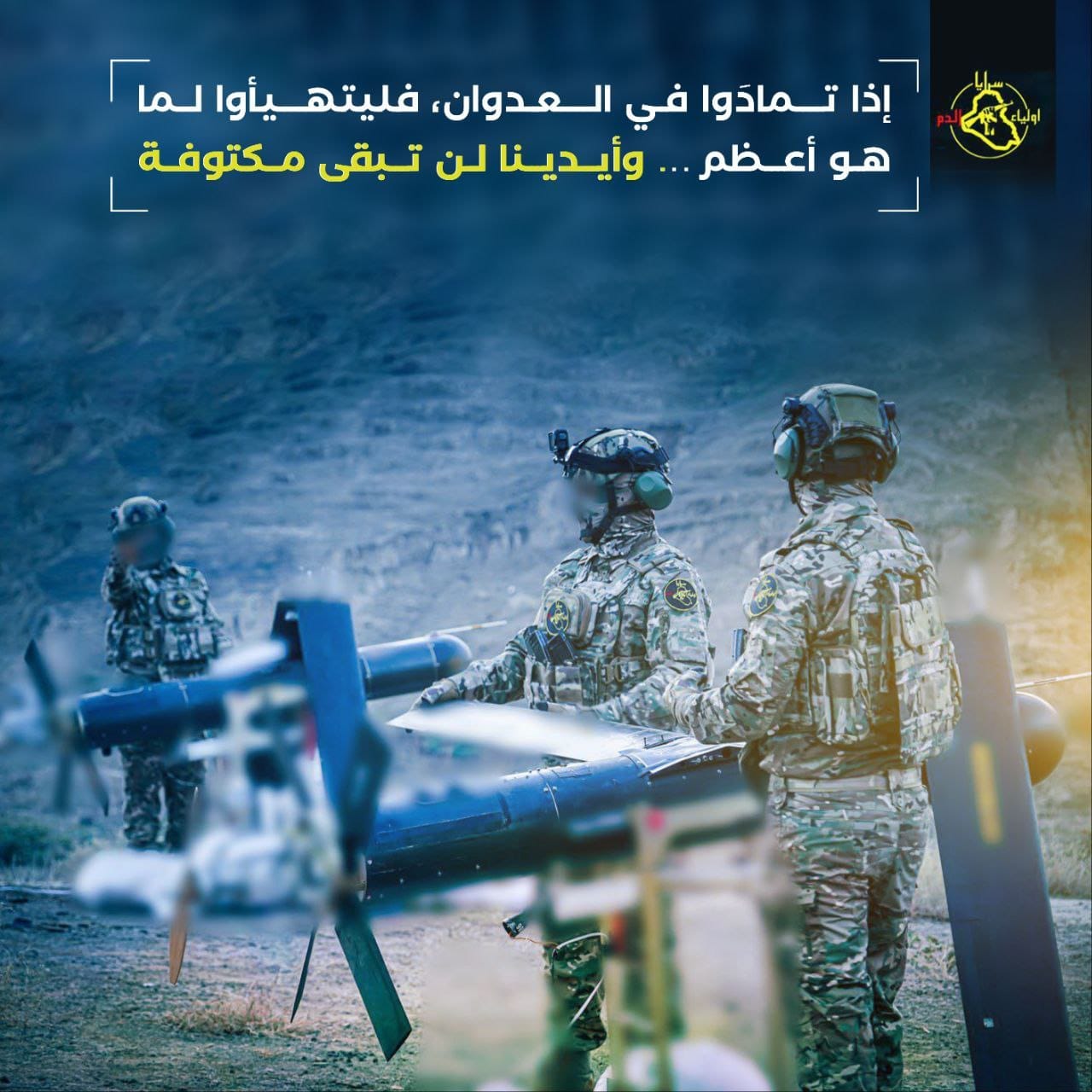First Iraqi Paramilitary Casualty in Israel-Iran War Marks Escalation Risk
Cross-border strike targeting Hezbollah-linked figure drags Iraqi paramilitary into escalating regional conflict
Note: This post may be updated as more verifiable information becomes available.
Incident: The first reported Iraqi paramilitary casualty from an Israeli strike in the context of the war on Iran occurred on 21 June near the Iraq-Iran border, close to the Al-Sheeb border crossing in Maysan governorate (SEE ABOVE) and the Mehran crossing in Ilam governorate, Iran. The assassination reportedly happened on the Iranian side of the border.
The casualty was Haydar al-Mousawi, the head of the security unit of Kata'ib Sayyid al-Shuhada (KSS), a key Iran-allied ‘resistance’ faction in Iraq (14th brigade in the PMF). Mousawi was reportedly killed alongside [Hajj] Abu Ali Khalil, a known associate of Lebanese Hezbollah’s slain general-secretary Hassan Nasrallah, and Khalil’s sons. KSS confirmed Mousawi’s death in a statement (SEE BELOW STATEMENT) published on Telegram at 20:15 (GMT+3).
What it means? The strike likely targeted the assassination of Abu Ali in the first place, with Mousawi killed as collateral.
Note that on 19 June, Saraya Awliya al-Dam (SaD), a group speculated to be a facade for KSS, implicitly warned through a graphic image (SEE BELOW STATEMENT) that it would intervene if ‘aggression persists.’ Both SaD and Kata’ib Hezbollah (KH) have promised in statements on 19 June their engagement if the US intervenes directly in the ongoing conflict.
Kata'ib Sayyid al-Shuhada’s (KSS) secretary-general, Abu Ala al-Walaee, has been observed participating in multiple meetings of the Coordination Framework (SEE BELOW IMAGE), which constrains the faction’s military maneuverability compared to some other ‘resistance’ groups. Walaee’s political proximity to the governing coalition makes it more likely that KSS opts to issue kinetic threats through a facade rather than delivering them under its name.
KSS secretary-general seen attending CF meeting with PM Sudani (April 2025)
What is next? The incident further increases the likelihood of direct Iraqi paramilitary involvement in the ongoing war. However, for now, these groups appear to favor restraint over immediate armed action, likely with Iran's endorsement, which seems intent on shielding its allied factions from escalation. American and Israeli responses would likely involve a scenario of vertical leadership decapitation, reminiscent of strategies previously used against Hezbollah.
However, armed group intervention risks are increasing with indicators including 1) the increasing frequency of escalatory rhetoric from key Iran-backed Iraqi armed actors, 2) an Iranian statement on 19 June by former IRGC chief Mohsen Rezaee signaling the possible intervention of [regional] allies (without explicit reference to Iraqi ‘resistance’ groups), and 3) increasing signals of US military preparations for a potential intervention in the conflict against Iran.
Update: As of 10:40 GMT+3, Iran-backed paramilitary groups have not issued any official response to the 22 June US strike on Iranian nuclear facilities. Meanwhile, pro-‘resistance’ Iraqi Telegram channels appear to be downplaying the scale and impact of the strikes.









